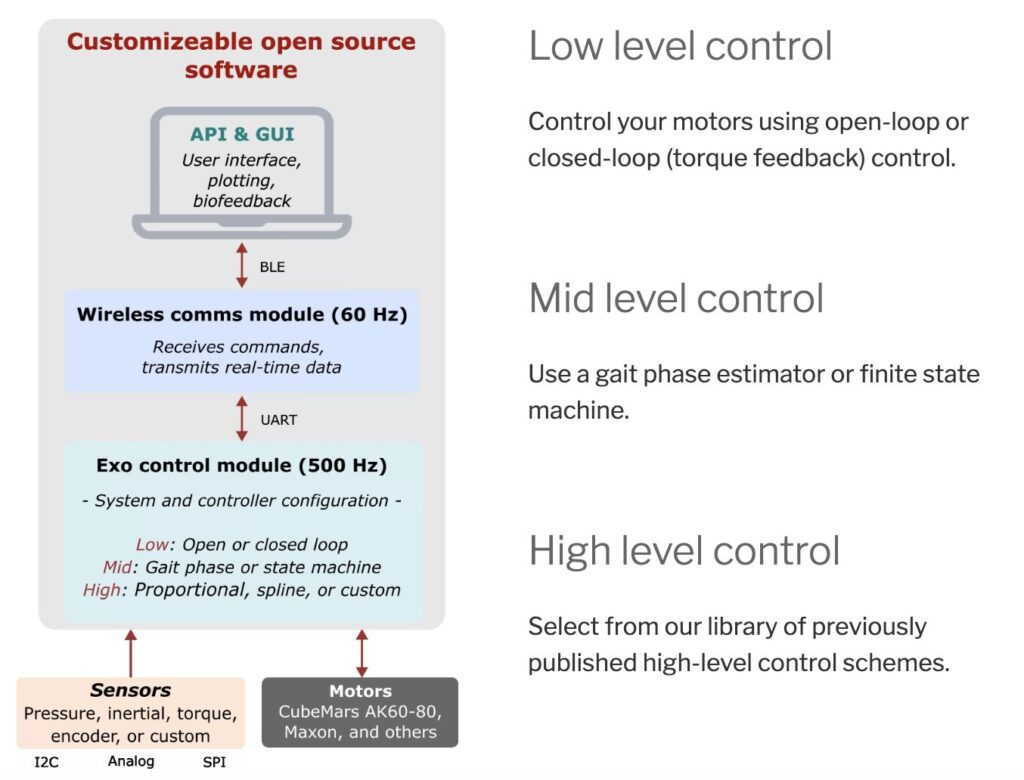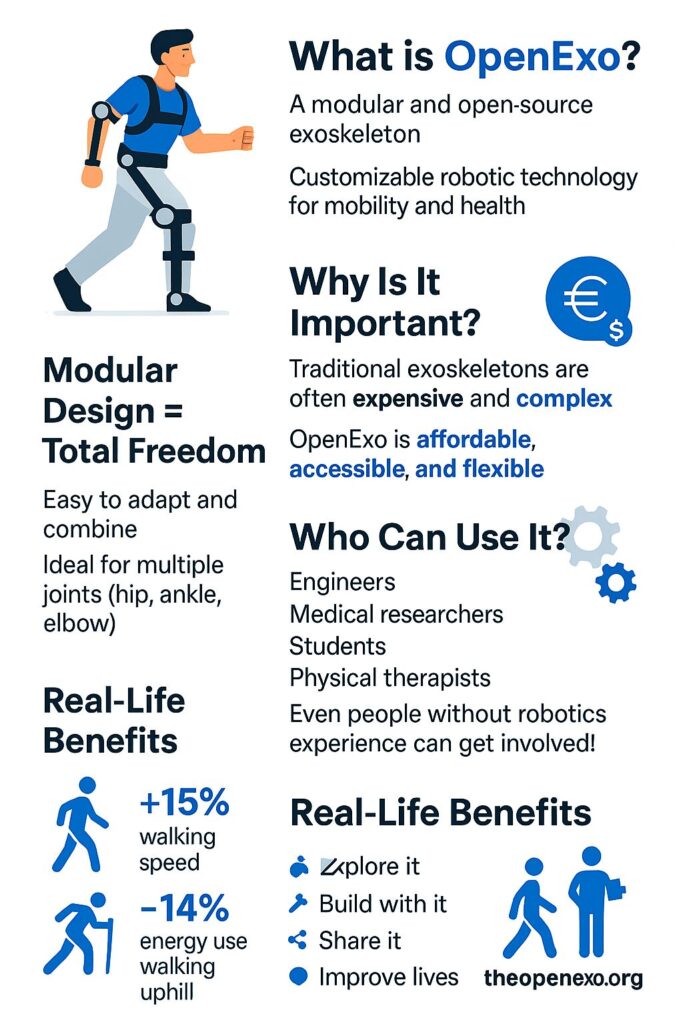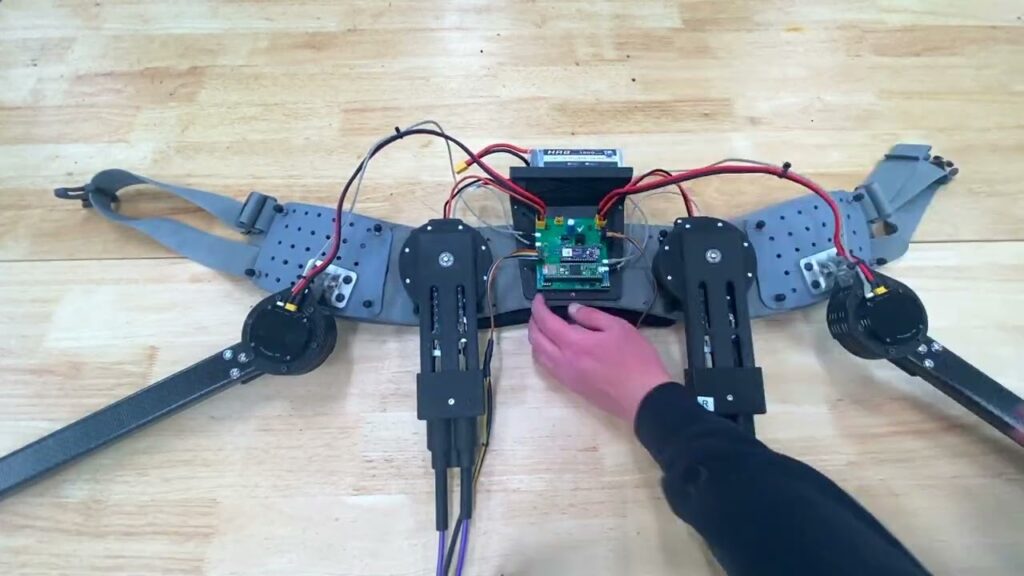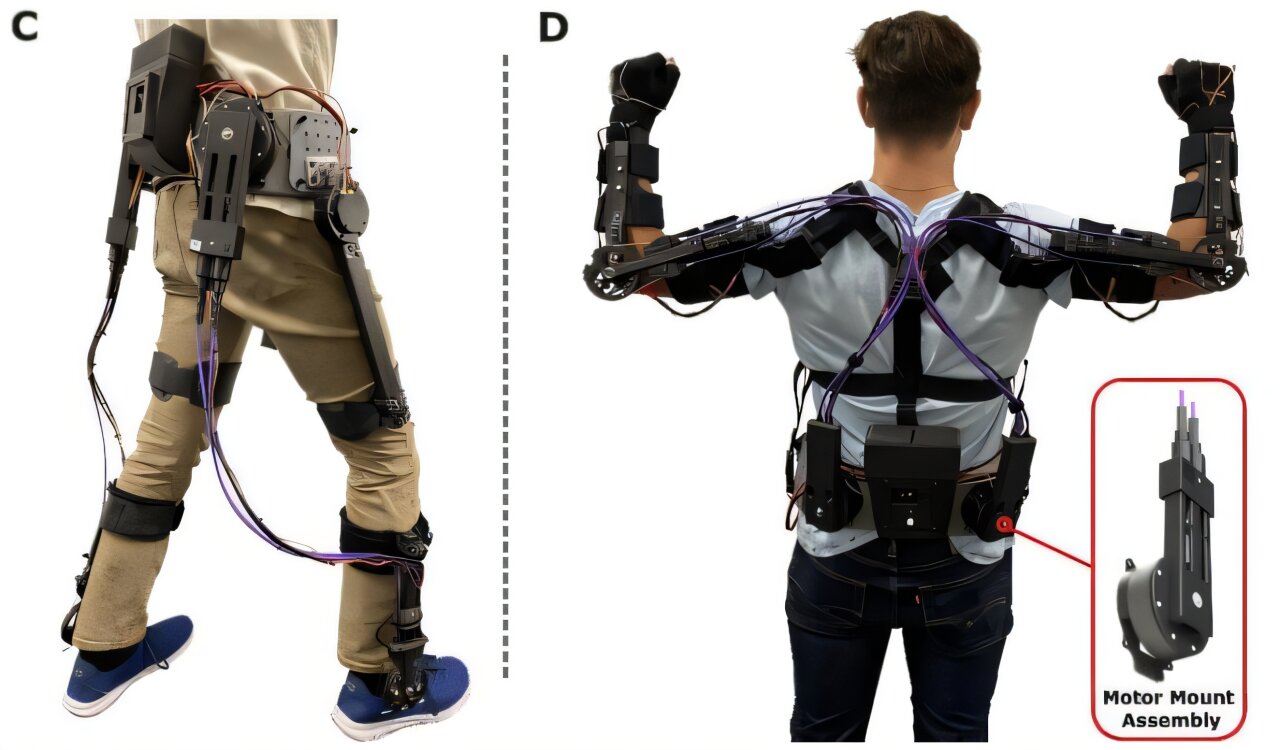Not long ago, robotic exoskeletons felt like science fiction—something you’d see in superhero films or futuristic labs. But today, thanks to OpenExo, this vision is moving into the real world. OpenExo is an open-source, modular exoskeleton system that’s making it easier than ever for researchers, engineers, clinicians, and even curious innovators to create wearable robotic devices that enhance movement and reduce physical strain.
Musumeci Online – The Podcast. It is perfect for driving, commuting, or waiting in line!
What’s an Exoskeleton—and Why Should We Care?
Think of an exoskeleton like a wearable robot that supports or amplifies your body’s natural movements. For people recovering from injuries, living with neurological conditions, or performing physically demanding jobs, exoskeletons can improve mobility, reduce fatigue, and even prevent long-term injuries.
But despite their promise, exoskeletons have remained mostly confined to labs. Why? Because they’re expensive, complex to build, and often customized for a single purpose. That’s where OpenExo steps in.
Breaking Barriers with OpenExo
OpenExo is more than just a device—it’s a framework. Unlike traditional commercial exoskeletons that are tightly controlled and inflexible, OpenExo gives you everything: software, hardware, electronics, and control algorithms, all open-source and ready to modify.
This is like giving the keys to the lab to anyone with a good idea. Whether you’re a biomechanics researcher, a student, or a startup, OpenExo lets you skip the painful development process and focus on innovation.

Designed for Real Life, Not Just the Lab
Many robotic systems work only in tightly controlled settings. OpenExo is different. It’s untethered, portable, and built for the real world—indoors or outdoors, uphill or on flat terrain, in clinical therapy sessions or work environments.
It supports multiple configurations, including:
- Hip-only for walking up inclines
- Ankle-only for daily mobility
- Elbow support for heavy lifting
- Combined hip-and-ankle for carrying loads

Why Modularity Matters
Let’s use a simple analogy: imagine building with LEGO bricks instead of gluing parts together. That’s the philosophy behind OpenExo’s modular design. You can swap components, tweak settings, or add new features without starting from scratch. Want to explore new motor types or try a novel control method? The system is ready for it.
Everything runs on a dual-microcontroller system (Teensy 4.1 and Arduino Nano BLE 33), with plug-and-play software written in C++ and Arduino. The companion Python app even lets users control the system in real time and adjust parameters like torque strength—ideal for testing new ideas on the fly.

A Tool for Researchers, Makers, and the Curious
Accessibility is a core mission for OpenExo. Alongside the code and hardware specs, you’ll find step-by-step guides, part lists with price breakdowns (the base system costs around $2,000–2,500), and tutorials that make it usable even for non-engineers.
This means that people who may not traditionally work in robotics—like physical therapists, clothing designers, or AI researchers—can now contribute meaningfully to exoskeleton development.
Real-World Benefits You Can Feel
In experimental tests:
- Hip support reduced energy consumption during uphill walking by up to 14%.
- Ankle support improved walking speed and stride length outdoors.
- Elbow support doubled or even tripled the number of weightlifting reps while lowering muscle strain.
Even with current battery limitations (which last 15–35 minutes in full use, depending on configuration), the benefits are clear and impactful. And since this is an open platform, future battery and hardware improvements can be easily integrated.
Toward a Future of Wearable Mobility
OpenExo is part of a larger movement: making advanced health technologies democratic, collaborative, and scalable. It’s already serving as a testbed for integrating AI, biofeedback, and smart materials into wearable robotics. Imagine smart exoskeletons that adjust in real-time to your body, terrain, or fatigue levels. That future is no longer far off.
Just as open-source software transformed computing, OpenExo might do the same for mobility.
Final Thought
In a world where millions struggle with movement—whether from aging, injury, or intense physical labor—tools like OpenExo offer more than convenience. They offer freedom, dignity, and opportunity.
The best part? You don’t have to be a robotics expert to get involved. With OpenExo, the door to innovation is open. You just have to step through.


Leave a Reply